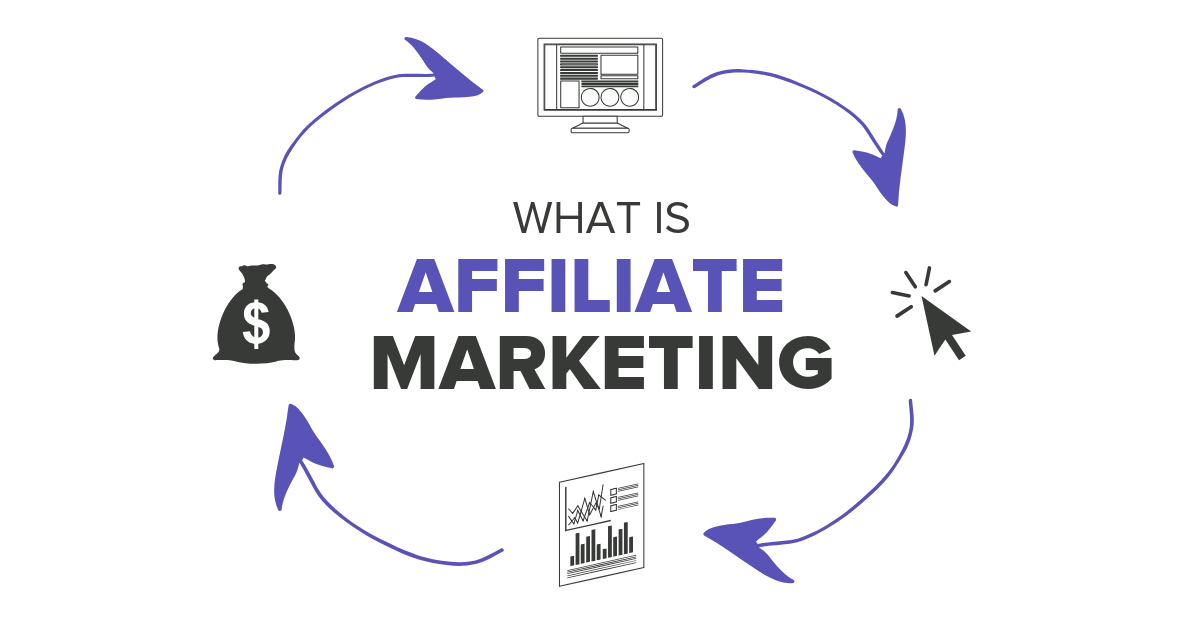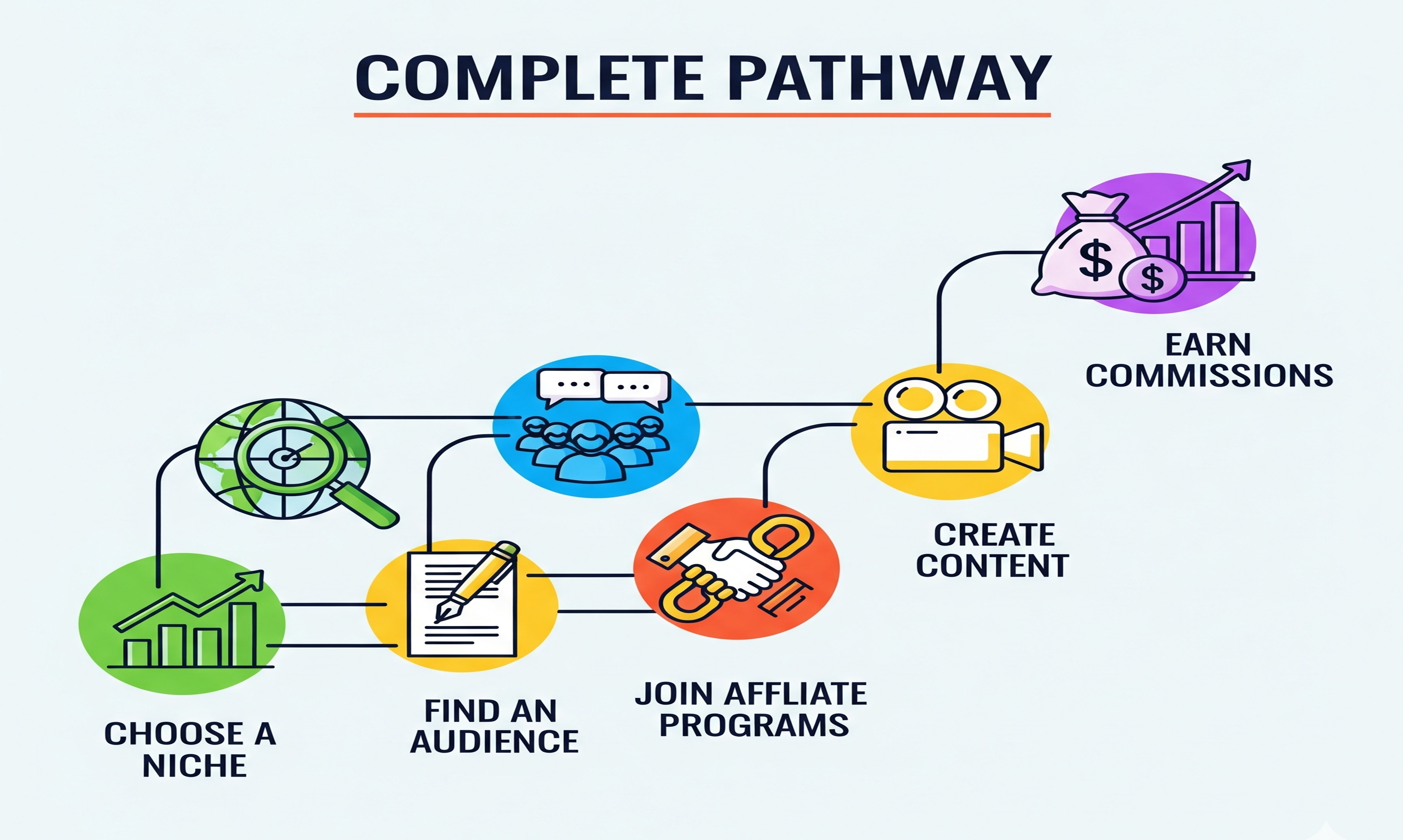Affiliate Marketing for Beginners: 10 Challenges You Must Know

Share this article:
Reading time: 7 min read
Affiliate marketing is one of the most popular ways to earn passive income online. Yet, for many, myself included, it began as a promise that led to disappointment. I was once lured into paying for courses and webinars that led to dead ends.
The truth is that affiliate marketing isn’t a magic button for instant wealth; it’s a business that thrives on traffic, strategy, and patience. Like every other business, it demands skill, consistency, and a plan.
Affiliate marketing is, at its core, a game of traffic. You need numbers to make it make sense. The more people who see your contents, the higher your chance of earning a commission. But it’s also a game of patience. Building a steady flow of visitors—people who trust your recommendations and follow your links—takes time. It’s the hardest part of the process, and it’s where most people give up.
The concept itself manages to find its way into the hearts of many aspiring entrepreneurs because it sounds simple: promote a product, earn a commission. But the simplicity is deceptive. Without structure, affiliate marketing is formless—like water. It takes the shape of whatever container you pour it into.
That’s the key insight most beginners miss. Affiliate marketing on its own has no inherent value. It’s neutral, fluid, and undefined until you give it form. Pour it into a clear strategy—such as a focused niche, a sales funnel, or a targeted campaign and it becomes something powerful. Leave it uncontained, and it spreads aimlessly, losing its energy and potential. In other words, affiliate marketing only works when guided by strategy and systems. It is the effect of passive income, not the cause. “Affiliate marketing” is simply the language you use to describe the success of your underlying systems; the strategies that make it function and flourish.
The idea itself is simple: you promote a product and earn a commission for every sale or lead generated through your unique link. On paper, it sounds like a shortcut to financial freedom. But in practice, most new affiliates never see consistent results. They spend time and money but walk away disillusioned because they expected water to stand on its own without a container. Their affiliate marketing efforts were still formless, lacking the shape and support of a real plan. If you’ve been struggling to make affiliate marketing work, don’t be discouraged. The problem isn’t the concept—it’s the structure.
When you give it form through strategy, direction, and patience, it transforms from an empty idea into a thriving business. Focus on building traffic with purpose. Choose a niche that aligns with your interests and audience.
10 Major Challenges New Affiliates Face
So, what’s the biggest mistake new affiliates make? Affiliate marketing is often painted as the easiest path to earning passive income online. People imagine luxurious travel, flexible schedules, and financial freedom with minimal effort. The reality, however, is very different. Affiliate marketing requires industry knowledge, strategy, and patience to succeed. Most beginners struggle not because the idea is flawed, but because they underestimate the challenges. Here are the most common obstacles new affiliates face and how to overcome them.
1. Mindset: Resilience Over Comfort
If you fear failure or quit at the first sign of difficulty, affiliate marketing is not for you. Owning a business—affiliate or otherwise—comes with frustration, setbacks, and moments when you want to give up. You’ll face days when nothing seems to work, when content doesn’t get traffic, or conversions fall short. Resilience is your most valuable asset. The difference between success and failure often comes down to whether you push through the hard moments or quit too early.
2. Focus on What People Want, Not What You Like
One of the hardest lessons I learned was separating my personal preferences from market demand. I promoted amazing products that I personally loved—but they didn’t sell. Meanwhile, products I considered mediocre brought in thousands of sales. The takeaway is simple: your audience doesn’t care what you like. They care about what solves their problems or fulfills their desires. Effective affiliate marketing requires understanding your audience and prioritizing their needs over your personal opinions.
3. Consistency: Small Efforts, Repeated Over Time
Many affiliates fail simply because they are inconsistent. If you commit to one video a week, publish it every week without fail. If you write articles, schedule them regularly. Think of consistency like building a credit score. Pay your bills late, and your score suffers; meet your commitments consistently, and it grows. The same applies to content. Publishing sporadically or in bursts won’t generate traffic or trust. Consistency compounds over time, building authority, engagement, and eventually, income.
4. Perseverance: Don’t Give Up Too Soon (The 80/20 Rule)
Most new affiliates fail in the first year, not because the niche is wrong or the product is bad, but because they quit too soon. The first 80% of effort, setting up a site, creating an email list, and producing content is technical and exhausting. The last 20%, marketing, refining, and engaging your audience is where persistence pays off. This is often the hardest part. Many see limited results after months of work and assume it’s not worth it. Those who persevere past this tipping point find success.
5. Prioritizing Selling Over Helping
Many beginners focus solely on conversions and sales. This mindset leads to low-value content that users and search engines ignore. High-quality content should always serve the reader first. Focus on benefits rather than features, and remove obstacles that frustrate users, such as intrusive pop-ups or aggressive banner ads. Helping your audience first builds trust, engagement, and long-term conversions.
6. Producing Low-Quality Content
Your content is your product in affiliate marketing. One excellent post will always outperform ten mediocre ones. Research topics carefully: find low-competition keywords, understand what top-ranking articles offer, and match or exceed their quality. Include images, keep readability high, and make the content actionable. Then promote your content actively through social media, email, and link-building strategies. Publishing without promotion is wasted effort.
7. Neglecting Site Speed
Even the best content won’t convert if your website is slow. Users expect pages to load quickly, and bounce rates skyrocket if they don’t. Optimize images, implement caching, and consider a CDN for faster delivery. Speed improves user experience, rankings, and conversion rates simultaneously.
8. Ignoring Readability
Visitors won’t engage with confusing or hard-to-read content. Use fonts that are at least 16pt, avoid long paragraphs, and break sentences into digestible chunks. **Pro Writing Aid **and Grammarly are tools that can help ensure your content is readable for a wide audience. Remember: clarity builds trust and keeps users on your page.
9. Lack of Product Knowledge
Your readers are savvy. If you can’t demonstrate expertise about what you’re promoting, they’ll move on. Stay informed through blogs, forums, and industry news. Understand the questions and concerns of your audience so your content answers them effectively. Knowledge builds credibility, which builds conversions.
10. Overlooking SEO Basics
Publishing content without proper SEO is like building a house without roads. Structure your site and content so search engines can find and rank it. Optimize keywords, internal links, metadata, and backlinks. SEO is the foundation that drives traffic consistently over time.
Until we meet again, cheers to your success in whatever you want to achieve!





